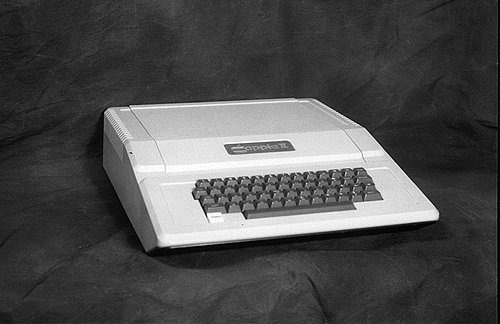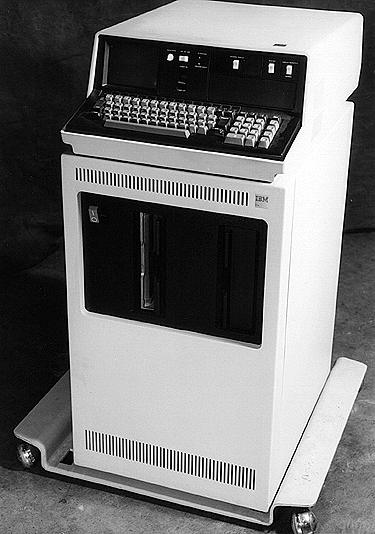INNOVATION AND FIRSTS
Where were the big companies when the
innovative products were first coming out of
the young upstarts? Well, in some cases, they
were creating innovations and failing to make
products out of them. Xerox, in their Palo Alto
Research Center (PARC), created the
Alto,
 Photo by Kevin Powers
a high-resolution graphic computer that was intended to be
what the Macintosh became. Xerox PARC also
created the world's first
prototype laser printer,
Photo by Kevin Powers
a high-resolution graphic computer that was intended to be
what the Macintosh became. Xerox PARC also
created the world's first
prototype laser printer,
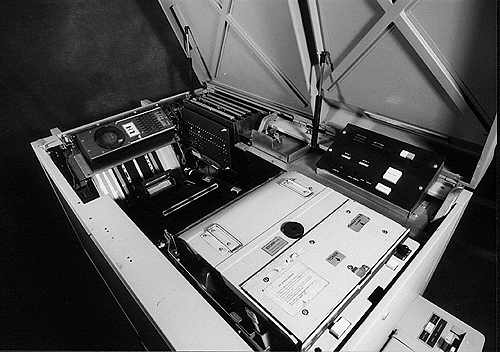 Photo by Kevin Powers
based on a standard office copier. But even with that
head start they did not come to dominate the
early laser printer market.
Photo by Kevin Powers
based on a standard office copier. But even with that
head start they did not come to dominate the
early laser printer market.
PARC also prototyped portable computers,
like the
NoteTaker,
 Photo by Kevin Powers
which was never produced but looks
remarkably similar to the later
Osbome 1.
Photo by Kevin Powers
which was never produced but looks
remarkably similar to the later
Osbome 1.
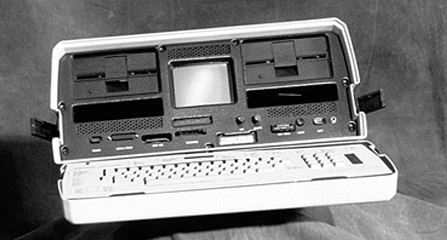 Photo by Kevin Powers
Photo by Kevin Powers
How Xerox repeatedly managed to invent the future but failed to
build it has been chronicled in several books
like the aptly titled Fumbling the Future by
Douglas Smith and Robert Alexander and the
more recent Dealers of Lightning by Michael
Hiltzik.
One of the minefields in the technological
history business is the election of "firsts." It
depends on pedantically precise definitions,
requires meticulous and detailed records, is
almost always controversial, is often
historically meaningless, and engenders
emotional responses that can sometimes lead
to fisticuffs. But it's fun! So in that spirit, The
Boston Computer Museum, our ancestor
whose collection is the core of ours, ran a
contest in 1985 to discover the real first
personal computer. The winner, as the "first
advertised commercially available non-kit
computer under $1000," was a computer you
have never heard of: the
Kenbak-1,
 designed
by John V. Blankenbaker and advertised in
Scientific American in 1971. "Firsts," when you
find them, may not be what you expect.
designed
by John V. Blankenbaker and advertised in
Scientific American in 1971. "Firsts," when you
find them, may not be what you expect.
The Museum's award for the first
microprocessor-based computer was given to
an almost equally obscure French computer,
the Micral, designed by Vietnamese immigrant
Thi Truong around an Intel 8008 and
programmed by Philippe Kahn.
The election of "firsts" depends
an pedantically precise
definitions, requires meticulous
and detailed records, is almost
always controversial, is often
historically meaningless, and engenders emotional
responses that can sometimes lead to fisticuffs. But it's fun!
Speaking of microprocessors and firsts, what
was the first microprocessor-based device? It was this
calculator from Busicom,
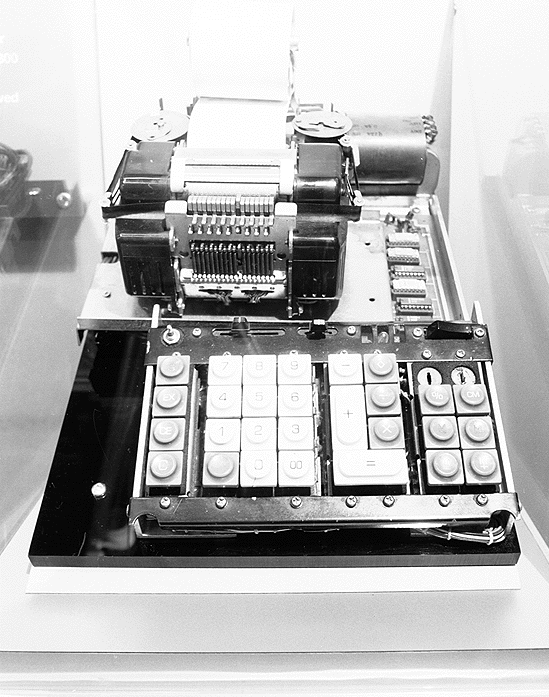 Photo by Kevin Powers
a Japanese company that hired Intel in 1971 to
create the world's first microprocessor, the 4004. This
prototype, from Federico Faggin's desk, has
one of the world's first working microprocessor
chips plugged into it.
Photo by Kevin Powers
a Japanese company that hired Intel in 1971 to
create the world's first microprocessor, the 4004. This
prototype, from Federico Faggin's desk, has
one of the world's first working microprocessor
chips plugged into it.
Stand-alone analog computers
became dinosaurs that only
survive in textbooks and
computer history museums.
go to top
Forward,
Backword,
Table of Contents,
Docent Page



